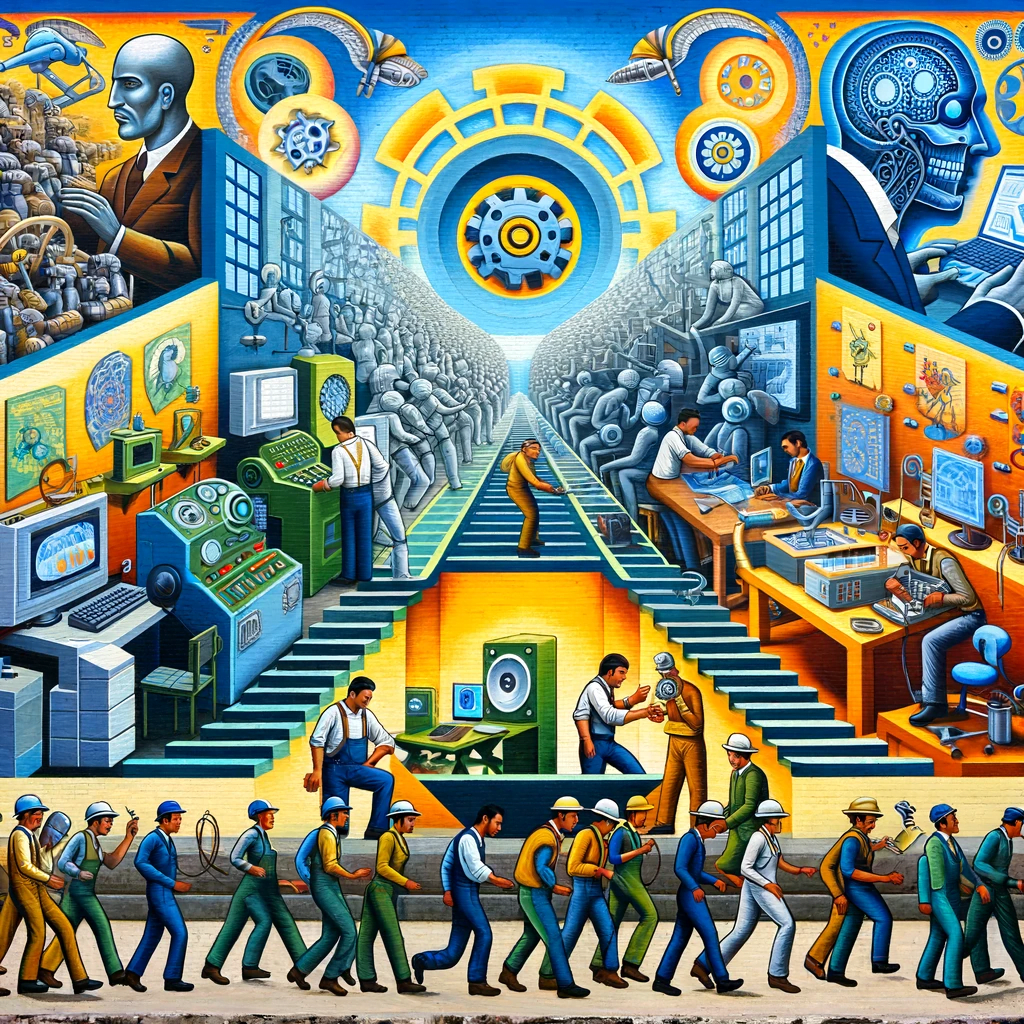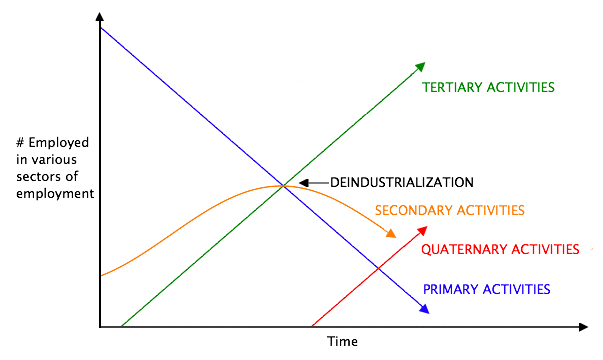Technology is fundamentally altering the way we live. Known as the fourth industrial revolution, is blurring the lines between physical and digital activities. The quaternary sector is emerging and disturbing most of the major industries in every country.
What is the quaternary industry or sector?
The quaternary sector or quaternary industry is the economic activity based on the intellectual or knowledge-based economy. This involves work that conceives, creates, interprets, organizes, directs, and transmits with the help and support of scientific and technical knowledge.
The foundation of this type of activity is creation. It is the sector of mind, knowledge, and skill. It creates value for society from technology applications or human ingenuity. The quaternary sector adds value to raw materials, not through physical alteration but by intellectual enhancement like software in smartphones adding more value than the hardware components.
From an economic point of view, the quaternary sector is an additional delineation of the tertiary sector, that is, the economic activities that make up the quaternary sector also belong to the tertiary activities.
Main Characteristics of the Quaternary Sector
- Led by developed countries and big companies
- Research and capital intensive
- Works with other sectors of the economy
- Disrupts many labor markets
Examples of quaternary industry or sector
Some industries in the quaternary sector are consultancy, financial planning, designing, information technologies, research and development (R&D), and generation of information. Also according to some interpretations, other activities that belong to this sector are the entertainment industry, media, culture, and government.
Some examples of products and services are artificial intelligence, big data, robotics, the Internet of Things, autonomous vehicles, 3D printing, nanotechnology, and quantum computing.
Quaternary sector’s impact on decision-making is profound, with data-driven strategies becoming central to organizational leadership. Tools such as predictive analytics or AI are not just aiding but also automating complex decision processes.
The difference between the tertiary and quaternary sector

The main difference between the tertiary sector and the quaternary sector is that, although both provide services, the services of quaternary activities are intellectual rather than repetitive activities.
This difference is difficult to establish in the real world but gives a notion of what the sector is about. In this way, jobs such as cashier, hairdresser, taxi driver, or sweeper are easy to classify as laborers from the tertiary sector due to their repetitive actions.
Quaternary job examples
Activities such as academic research, financial analysis, web development, movie directing, writing, or painting are classified easily as jobs from the quaternary sector. However, works like doctors or teachers are difficult to categorize or because it is debatable how focused they are on intellectual research and development.
Companies like SpaceX, Genentech, OpenAI with ChatGPT, Google, Meta, etc. exemplify the quaternary sector, where the primary product is innovation. Their successes hinge on their ability to create and leverage new knowledge and technologies.
The Workforce Evolution within the Quaternary Sector
For blue-collar workers, There is an evolution in the positions requiring advanced analytical skills reflecting the shift toward intellectual labor. This transition marks a departure from manual work to occupations demanding continuous education and adaptability. Blue Collar workers are becoming Gold Collar workers.
Gold-collar workers are redefining the workforce within the quaternary sector. These individuals are marked by their exceptional skill sets, high levels of education, and the ability to navigate complex problem-solving scenarios. They are highly skilled professionals: scientists, engineers, analysts or programmers; wielding expertise in fields such as artificial intelligence, quantum computing, and biotechnology.
For instance, in the manufacturing sector, where blue-collar jobs dominate, we now see a surge in demand for engineers and technicians who can manage and improve automated production lines.
The Emergence of the Quaternary Sector
With the automation of jobs, the activities of the quaternary sector are becoming more prominent. Thanks to technological advances, many tasks from primary activities (agriculture), secondary activities (industry), and even the services sector (restaurants) have been mechanized.
For example, in agriculture, the use of machinery, fertilizers, and modern techniques of cultivation have produced an increase in the total agricultural output while demanding less human work.
This idea is reflected in the theory of the three sectors developed by Colin Clark and Jean Fourastié. The theory explains the existence of the three sectors hypothesis of the economy and the emergence of a fourth, the quaternary sector, once the country achieves some degree of development.
As seen in the graph, sometime after the country manages to develop through industrialization, a process of deindustrialization begins causing the intellectual services to start to grow, thus emerging the quaternary sector.
However, this doesn’t mean that the quaternary sector is only found in developed countries. While it is true that this sector is more prevalent in countries where this type of activity is promoted and people do not live in a state of subsistence and can engage in intellectual activities, several developing countries also have important quaternary activities.
In fact, The quaternary sector is a catalyst for economic development and growth, fostering environments where innovation flourishes, startups thrive, and knowledge is as valuable a commodity as tangible goods. Total factor productivity improves within the quaternary sector, where efficiency is driven by intellectual advancements rather than by increasing labor or capital alone.
The Quaternary Sector in the United States
In the United States, the quaternary sector’s influence is evident in Silicon Valley’s tech giants and Wall Street’s financial powerhouses. Advanced analytics and strategic information technology are revolutionizing traditional industries, setting a global benchmark for knowledge-driven economies.
What is the Quinary Sector?
An extension of the quaternary sector is the quinary sector, which includes the highest levels of decision-making in a society and economy, such as top executives and government officials, shaping policy and guiding innovation



Leave a Reply